Why a strong solar cycle 25 still spells disaster
We at Electroverse love an outlier. In science, what are considered bold or outside of the box theories have just as much chance of being correct as mainstream lines of thought. After all, science doesn’t work on consensus.
While the vast majority of solar physicists are predicting a weak solar cycle 25 (the weakest of the next 200 years, according to NASA), one group of UK scientists have just released a paper (June 27, 2020) suggesting cycle 25 will in fact be the strongest since 1840.
The paper, entitled “Overlapping Magnetic Activity Cycles and the Sunspot Number: Forecasting Sunspot Cycle 25 Amplitude” (linked here), suggests that solar cycle 25 is going to be the highest activity cycle in all of modern history–note the purple dot in the below chart (with the green dot indicating the forecast of more than 75% of solar physicists).

If the purple dot plays out, says Diamond of the ORP, “we’re fluxed” in-or-around the year 2025 (the solar maximum of cycle 25).
The magnetic field of Earth has been waning rapidly since 1850, in line with the coming magnetic excursion/reversal or pole shift.
This rapid waning has increased ten-fold over recent years:
Our planet’s magnetic field is our protection from space weather.
If we’re about to have the strongest solar cycle since 1840 –as proposed by the new paper– then the electrical grid, worldwide, is doomed to fail. The grid will be blasted by a powerful solar flare (or flares) while Earth’s shields are down–flares on par with the Carrington event of 1859, only far more destructive given our civilization’s total and utter dependence on electronics.
Quebec, 1989 is probably the best modern example of what could be.
As we’ve established, Earth’s magnetic field was far stronger 30 years ago than it is today. Yet still, on March 13, 1989 the entire province of Quebec, Canada suffered an electrical power blackout after a solar flare struck:
The Day the Sun Brought Darkness (NASA)
On Friday March 10, 1989 astronomers witnessed a powerful explosion on the sun. Within minutes, tangled magnetic forces on the sun had released a billion-ton cloud of gas. It was like the energy of thousands of nuclear bombs exploding at the same time.
The storm cloud rushed out from the sun, straight towards Earth, at a million miles an hour. The solar flare that accompanied the outburst immediately caused short-wave radio interference, including the jamming of radio signals from Radio Free Europe into Russia — it was thought that the signals had been jammed by the Kremlin.
On the evening of Monday, March 12 the vast cloud of solar plasma (a gas of electrically charged particles) finally struck Earth’s magnetic field. The violence of this ‘geomagnetic storm’ caused spectacular ‘northern lights’ that could be seen as far south as Florida and Cuba.
The magnetic disturbance was incredibly intense. It actually created electrical currents in the ground beneath much of North America. Just after 2:44 a.m. on March 13, the currents found a weakness in the electrical power grid of Quebec. In less than 2 minutes, the entire Quebec power grid lost power.
During the 12-hour blackout that followed, millions of people suddenly found themselves in dark office buildings and underground pedestrian tunnels, and in stalled elevators. Most people woke up to cold homes for breakfast. The blackout also closed schools and businesses, kept the Montreal Metro shut during the morning rush hour, and closed Dorval Airport.
The solar flare that hit was a relatively minor one (when compared to the Carrington event, for example), yet the Quebec Blackout was by no means a local event. Across the United States from coast to coast, over 200 power grid problems erupted within minutes of the start of the March 13 storm. In space, satellites actually tumbled out of control for several hours. NASA’s TDRS-1 communication satellite recorded over 250 anomalies as high-energy particles invaded the satellite’s sensitive electronics. Even the Space Shuttle Discovery was having its own mysterious problems. A sensor on one of the tanks supplying hydrogen to a fuel cell was showing unusually high pressure readings on March 13. The problem went away just as mysteriously after the solar storm subsided.
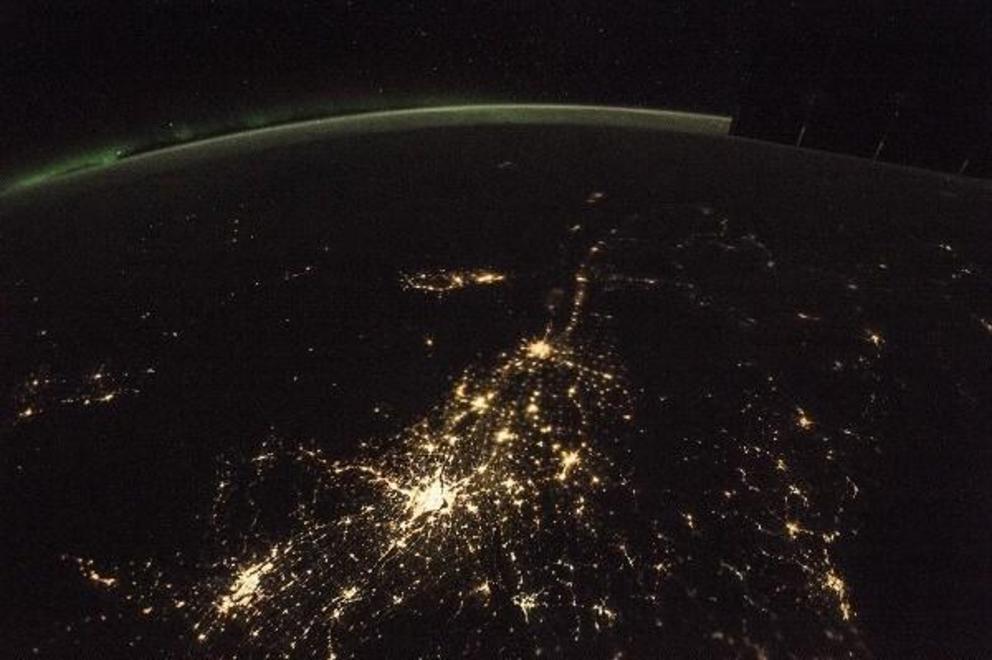
Quebec Blackout, 1989.
Although solar cycle 25 is undoubtedly around the corner, breaking down the latest data reveals it certainly isn’t here yet–least any signs that it’s going to be the monster that McIntosh et al suggest it’s going to be.
But before we get into that, it stands that perhaps those researchers in the UK are actually onto something. Looking at their sunspot prediction again, the year 1840 –the highest solar maximum of the modern era and one comparable to what they say is coming in the near future– lands just two decades before the Carrington Event:
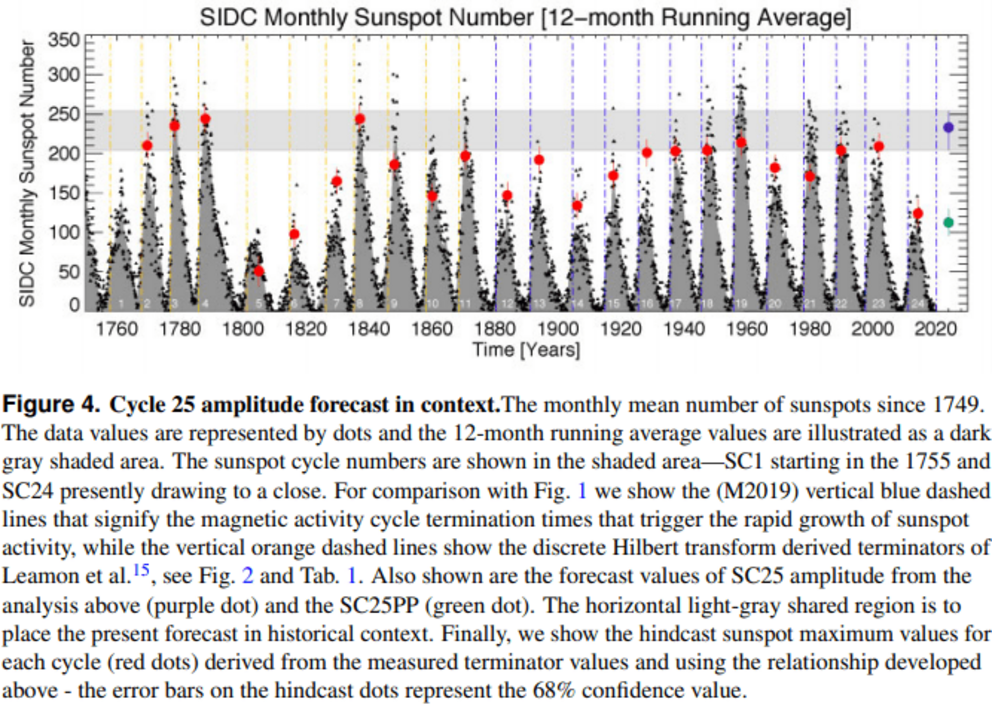
This could very well be a predictor for the next destructive solar outburst.
Two decades after the peak of solar cycle 25 takes us to approx. 2045. That puts it right on the timeline of Douglas Vogt’s work. Vogt’s research suggests the Sun will outburst its shell in October, 2046 in catastrophic fashion.
Perhaps these guys are onto something.
Perhaps not.
Time will tell.
But something we can know here and now — the latest data:
Looking at the last year of daily solar wind at SOHO (below), you can clearly see the speed has been decreasing over the past year, says Diamond — and “we’re still extending lower.”
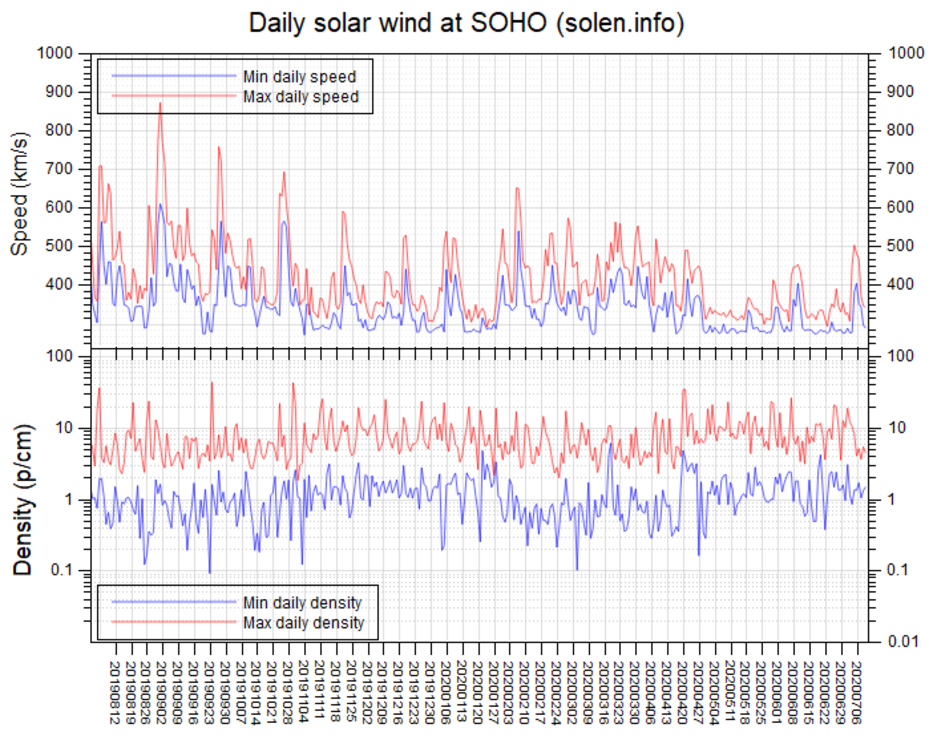
The Electron Flux (below) further supports this.
We are holding at or near the bottom, which would indicate we’re still in the minimum of solar cycle 24.
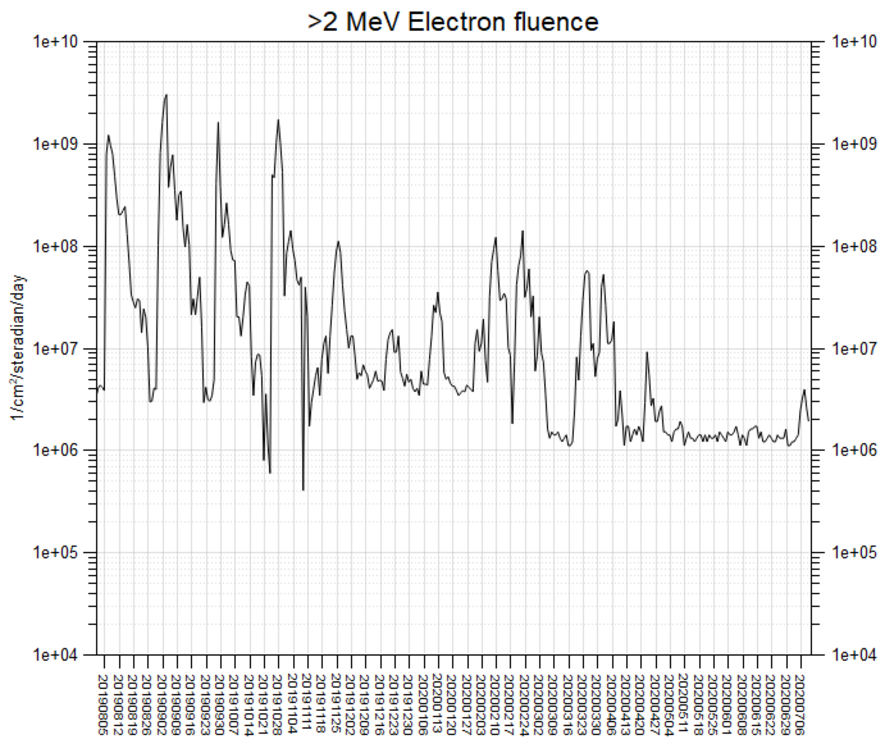
And likewise, the solar cycle sunspot number progression through May, 2020 shows us firmly rooted within the deepest solar minimum of the past 150 years:
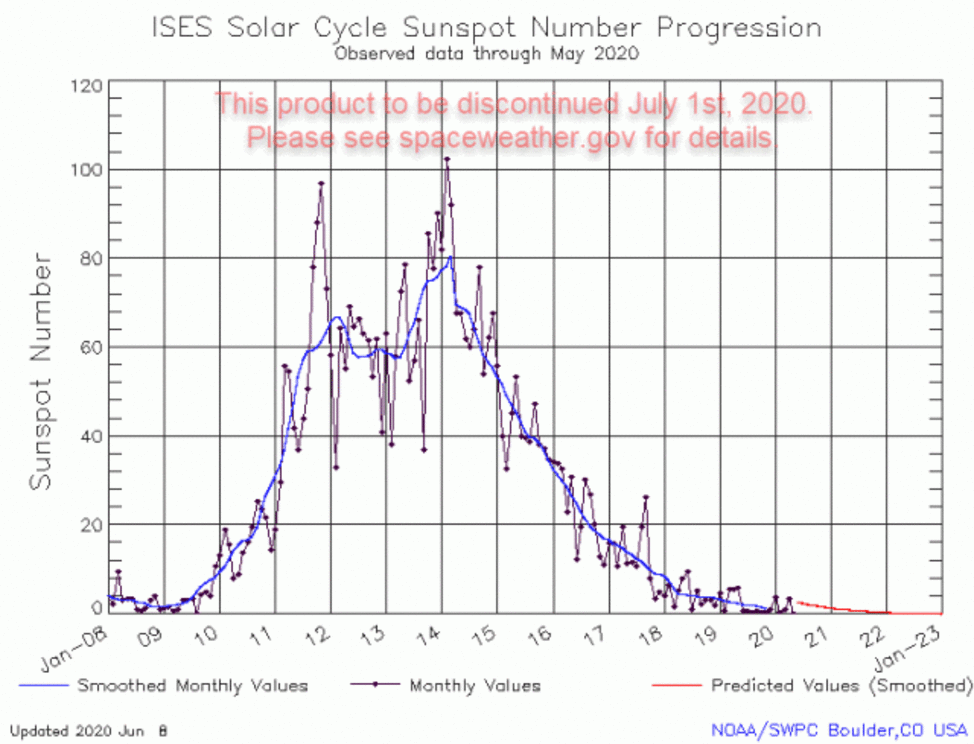
The solar minimum of cycle 24 has been the weakest of the past 150 years. What solar cycle 25 has in store remains anyone’s guess–even now, just months from its inception. Most signals point to it being another weak one, and the combining impact of multiple deep minimums will bring global temperatures plummeting.
But whether solar cycle 25 is strong or weak the need to prepare remains imperative. The COLD TIMES are likely returning, and they will likely be accompanied by a SOLAR FLARE/CME powerful enough to take out the grid between 2023-2027 (as SC25 experiences its max).
2046’s catastrophic outburst is less certain.
But things appear to be falling into place.
We humans are programmed to recognize cycles — the timeline for cyclical catastrophes reside deep within every one of us.
Look at the world today.
We sense it.
We recognize something is coming.
It would appear, however, that not everyone knows where to invest this energy. The blind panic over Climate Change and COVID-19, as well as degrading movements like BLM, are probably confused reactions to this impending sense of catastrophe.
But instead of hopping on the MSM’s bandwagon of doom, invest that energy into useful causes — learn the facts, relocate if need be, and grow your own.
Social Media channels are restricting Electroverse’s reach; Twitter are purging followers, and Facebook are labeling posts as “false” — be sure to subscribe to receive new post notifications by email (the box is located in the sidebar >>> or scroll down if on mobile).
And/or become a Patron, by clicking here: patreon.com/join/electroverse
The site receives ZERO funding, and never has.
Any way you can, help us spread the message so others can survive and thrive in the coming times.
Grand Solar Minimum + Pole Shift

